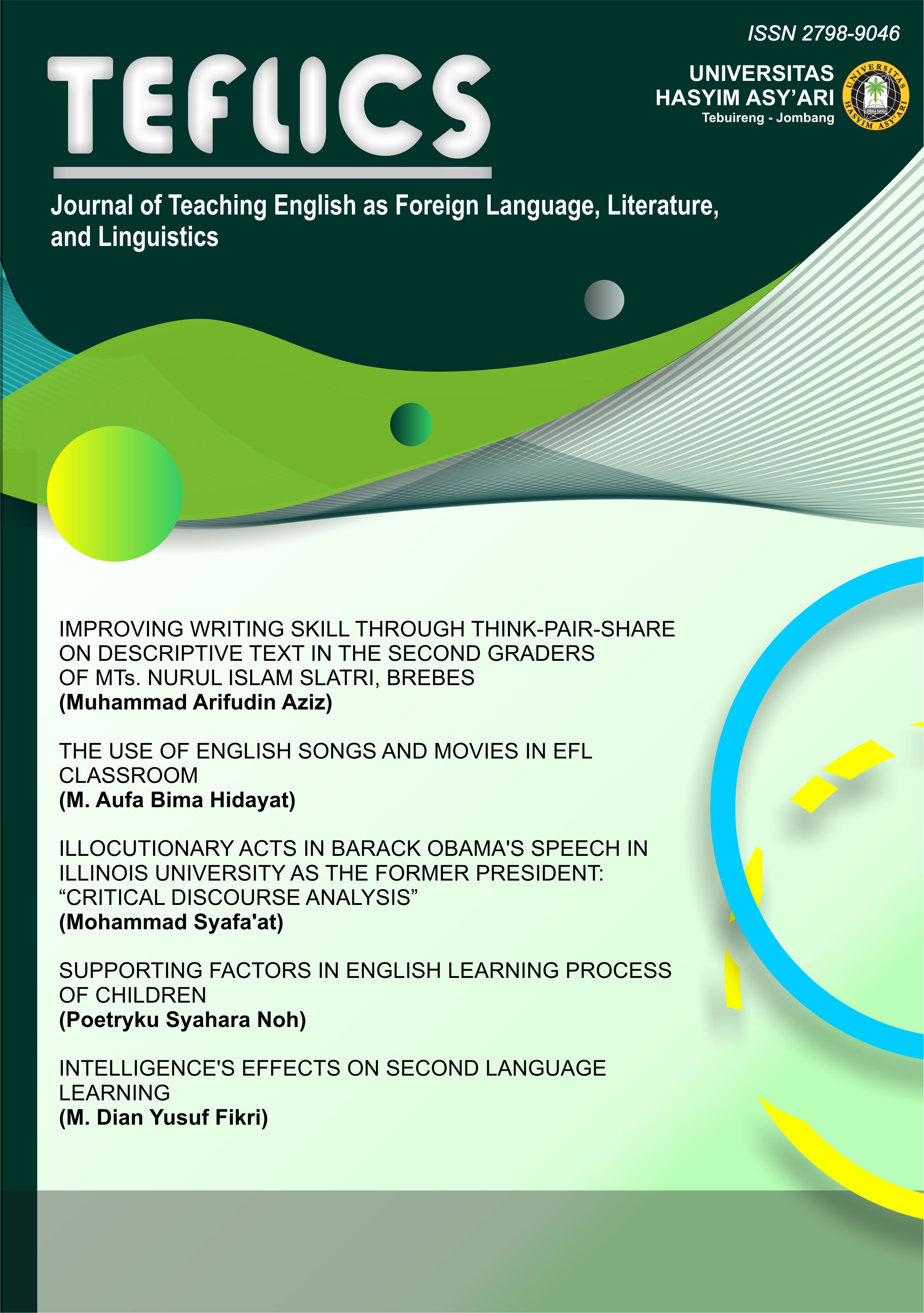ILLOCUTIONARY ACTS IN BARACK OBAMA’S SPEECH IN ILLINOIS UNIVERSITY AS THE FORMER PRESIDENT: “CRITICAL DISCOURSE ANALYSISâ€
DOI:
https://doi.org/10.33752/teflics.v1i1.1545Keywords:
Critical Discourse Analysis (CDA), Illocutionary ActsAbstract
This research discusses the use of illocutionary acts in the utterance of Obama’s speech in Illinois University. The aims of this research are to find out types of Illocutionary Acts and messages of speech which deliver by Obama’s Speech. and to understand interpretation of the dialogue between speaker and hearer that use Illocutionary acts which are selected by the writer.The writer uses classified the data analysis method. The writer collects the data from the script, then describes types of illocutionary acts and explain the messages include in utterances. Based on the theories provided, the data are analyzed one by one to know the context and types of illocutionary acts used. To focus on the study, the writer limits problem just focused on types of illocutionary acts and the messages of the utterances. Based on the finding and discussion that answered to first problem questions above the researcher was found 14 utterance used to illocutionary acts theory. There are assertives acts was found 5 utterances, directives acts was found 3 utterances, expressive acts was found 3 utterance, commisives acts 3 utterances and declaration was found 1 utterance. In this research the utterance most used by Obama’s speech is assertive which is 5 utterances. The context of Obama’s speech about Democracy. So, this speech have many assertives utterances. Based on the explanation, the writer concluded that assertive of stating and commisives of an offering is mostly used by Obama's speech.
Downloads
















